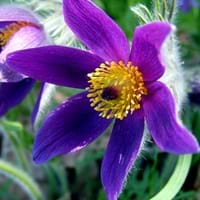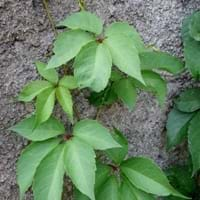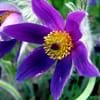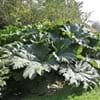Life Span
Annual and Perennial
Perennial
Origin
Europe, Eastern Europe, Southern Europe, Western Europe, United Kingdom
Central North America, Eastern Mexico, Eastern North America, Eastern United States, Southeastern Canada
Types
Pulsatilla vulgaris, Pulsatilla vulgaris rubra, Pulsatilla vulgaris alba
Not Available
Number of Varieties
Not Available
Habitat
meadows, Slopes, Wooded slopes
Brushlands, Chaparral, open Woodlands, Riverbanks, shaded woods, Stream side
USDA Hardiness Zone
5-7
7-8
AHS Heat Zone
7-5
Not Available
Sunset Zone
2b, 3a, 3b, 4, 5, 6, 15, 16, 17
Not Available
Habit
Clump-Forming
Spreading
Flower Color
Indigo, Purple, Violet
Not Available
Flower Color Modifier
Not Available
Bicolor
Fruit Color
Greyish Brown
Black, Blue
Leaf Color in Spring
Light Green
Green, Purplish Green
Leaf Color in Summer
Light Green
Gray Green
Leaf Color in Fall
Light Green
Blue Green
Leaf Color in Winter
Light Green
Gray Green
Leaf Shape
Rosette
Palmate
Plant Season
Spring
Late Summer
Sunlight
Full Sun
Full Shade, Partial shade, Partial Sun
Type of Soil
Loam, Sand
Loam, Sandy
The pH of Soil
Neutral, Alkaline
Neutral, Slightly Acidic, Slightly Alkaline
Soil Drainage
Well drained
Well drained
Bloom Time
Early Spring, Spring
Late Summer, Summer
Tolerances
Drought
Drought
Where to Plant?
Ground, Pot
Ground
How to Plant?
root cutting, Seedlings
Seedlings
Plant Maintenance
Medium
Low
Watering Requirements
Medium
Needs less watering
In Summer
Lots of watering
Moderate
In Spring
Moderate
Moderate
In Winter
Average Water
Ample Water
Soil pH
Neutral, Alkaline
Neutral, Slightly Acidic, Slightly Alkaline
Soil Type
Loam, Sand
Loamy, Moist, Sandy
Soil Drainage Capacity
Well drained
Well drained
Sun Exposure
Full Sun
Full Shade, Partial shade, Partial Sun
Pruning
Remove damaged leaves, Remove dead branches, Remove dead leaves
Prune after flowering, Prune for shortening long shoots, Prune in late summer or fall
Fertilizers
All-Purpose Liquid Fertilizer
Fertilize every year
Pests and Diseases
Cutworms, Larvae of Agave Weevil
Aphids, Black Vine Weevil, Caterpillars, Flea Beetles, Leaf eating pests, Leaf Hoppers, Scale
Plant Tolerance
Drought
Drought
Flower Petal Number
Single
Single
Foliage Texture
Fine
Fine
Foliage Sheen
Matte
Matte
Attracts
Not Available
Birds
Allergy
convulsions, Diarrhea, Not Available, Stomach pain, Vomiting
Abdominal pain, Bloody vomiting, Diarrhea, dilation of pupils, drowsiness, Headache, Nausea, Skin irritation, Sweating, Toxic, Twitching of face, Weak pulse
Aesthetic Uses
along a porch, deck or patio, Showy Purposes
Showy Purposes, Used for decorating walls, fences, gates, hedges, etc.
Beauty Benefits
Not Available
No Beauty Benefits
Environmental Uses
Air purification
Air purification, Food for animals, Food for birds
Medicinal Uses
Not Available
Antirheumatic, Cough, Diarrhea, Expectorant
Part of Plant Used
Not Available
Bark, Fruits, Root, Sap
Other Uses
Showy Purposes
Used as Ornamental plant, Used in herbal medicines
Used As Indoor Plant
No
No
Used As Outdoor Plant
Yes
Yes
Garden Design
Alpine, Mixed Border, Rock Garden / Wall
Vine, Wall
Botanical Name
PULSATILLA vulgaris
Parthenocissus quinquefolia
Common Name
Pasque Flower, wind flower, prairie crocus, Easter Flower, meadow anemone
Virginia creeper, Victoria creeper, five-leaved ivy, or five-finger
In Hindi
Pasque Flower
वर्जीनिया लता
In German
Kuhschellen
Selbstkletternde Jungfernrebe, Wilder Wein
In French
Pasque Flower
vigne vierge vraie, vigne vierge à cinq folioles, vigne vierge de Virginie
In Spanish
Pasque Flower
Parra Virgen, Viña virgen y Enredadera de Virginia
In Greek
Pasque Flower
αναρριχητικό φυτό της Βιρτζίνια
In Portuguese
Pasque Flower
Virginia Creeper
In Polish
Sasanka
winobluszcz
In Latin
Pasque Flower
Virginia creeper
Phylum
Vascular plant
Magnoliophyta
Class
Magnoliopsida
Magnoliopsida
Order
Ranunculales
Rhamnales
Family
Ranunculaceae
Vitaceae
Genus
Pulsatilla
Parthenocissus
Clade
Angiosperms, Eudicots
Angiosperms, Eudicots, Rosids
Subfamily
Not Available
Not Available
Number of Species
Not Available
Properties of Pasque Flower and Virginia Creeper
Wondering what are the properties of Pasque Flower and Virginia Creeper? We provide you with everything About Pasque Flower and Virginia Creeper. Pasque Flower doesn't have thorns and Virginia Creeper doesn't have thorns. Also Pasque Flower does not have fragrant flowers. Pasque Flower has allergic reactions like convulsions, Diarrhea, Not Available, Stomach pain and Vomiting and Virginia Creeper has allergic reactions like convulsions, Diarrhea, Not Available, Stomach pain and Vomiting. Compare all the properties and characteristics of these two plants. Find out which of these plant can be used as indoor plant. If you are interested to decorate your house and garden, find out aesthetic uses, compare them and select the plant which will beautify your surrounding. Along with beautification, try comparing medicinal and edible uses of Pasque Flower and Virginia Creeper and you can choose the plant having best and most benefits.
Season and Care of Pasque Flower and Virginia Creeper
Season and care of Pasque Flower and Virginia Creeper is important to know. While considering everything about Pasque Flower and Virginia Creeper Care, growing season is an essential factor. Pasque Flower season is Spring and Virginia Creeper season is Spring. The type of soil for Pasque Flower is Loam, Sand and for Virginia Creeper is Loam, Sandy while the PH of soil for Pasque Flower is Neutral, Alkaline and for Virginia Creeper is Neutral, Slightly Acidic, Slightly Alkaline.
Pasque Flower and Virginia Creeper Physical Information
Pasque Flower and Virginia Creeper physical information is very important for comparison. Pasque Flower height is 12.70 cm and width 15.20 cm whereas Virginia Creeper height is 1,500.00 cm and width 1,200.00 cm. The color specification of Pasque Flower and Virginia Creeper are as follows:
Pasque Flower flower color: Indigo, Purple and Violet
Pasque Flower leaf color: Light Green
Virginia Creeper flower color: Not Available
- Virginia Creeper leaf color: Green and Purplish Green
Care of Pasque Flower and Virginia Creeper
Care of Pasque Flower and Virginia Creeper include pruning, fertilizers, watering etc. Pasque Flower pruning is done Remove damaged leaves, Remove dead branches and Remove dead leaves and Virginia Creeper pruning is done Prune after flowering, Prune for shortening long shoots and Prune in late summer or fall. In summer Pasque Flower needs Lots of watering and in winter, it needs Average Water. Whereas, in summer Virginia Creeper needs Moderate and in winter, it needs Ample Water.





